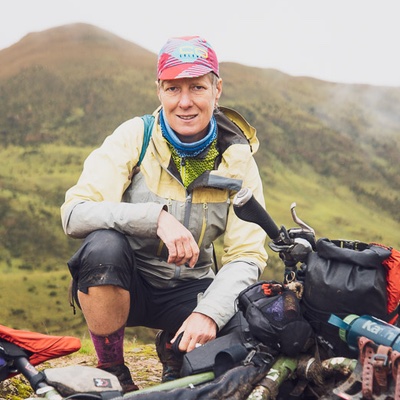Blog
stories • happenings • adventures
The Unlikely BikepackHER – Finding Strength in Cycling
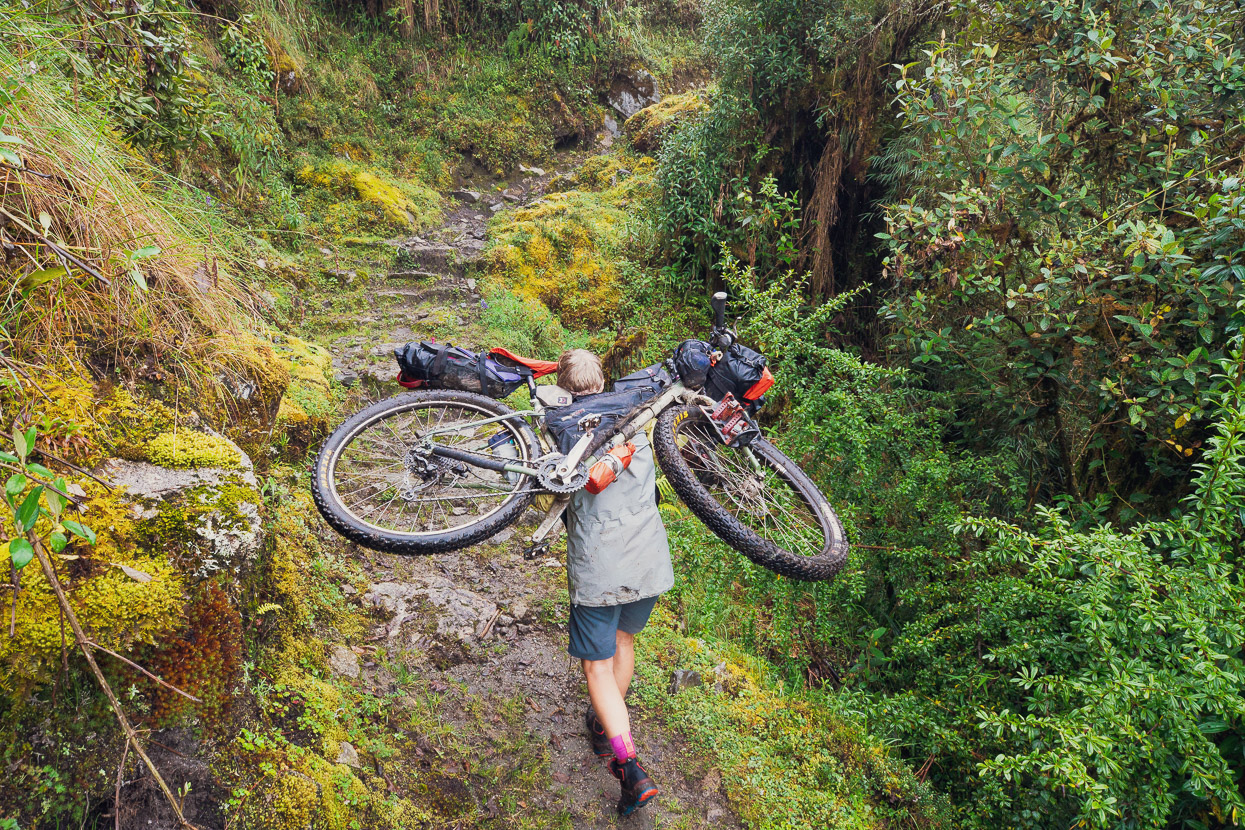
Photo by Mark Watson//Highluxphoto
I plant my feet on the rough stone, hoping my cleats don’t slip on the wet surface, grit my teeth and drag my bike up the next step, reposition and repeat. Low cloud obscures both the view and the remaining 600 vertical metres to the pass, helping me focus only on the short distance I can see ahead. I think about the thousands of feet that have passed this way before, following a trail built by the Inca over 500 years ago. They weren’t dragging bikes over the 4500m pass; they made llamas do the work.
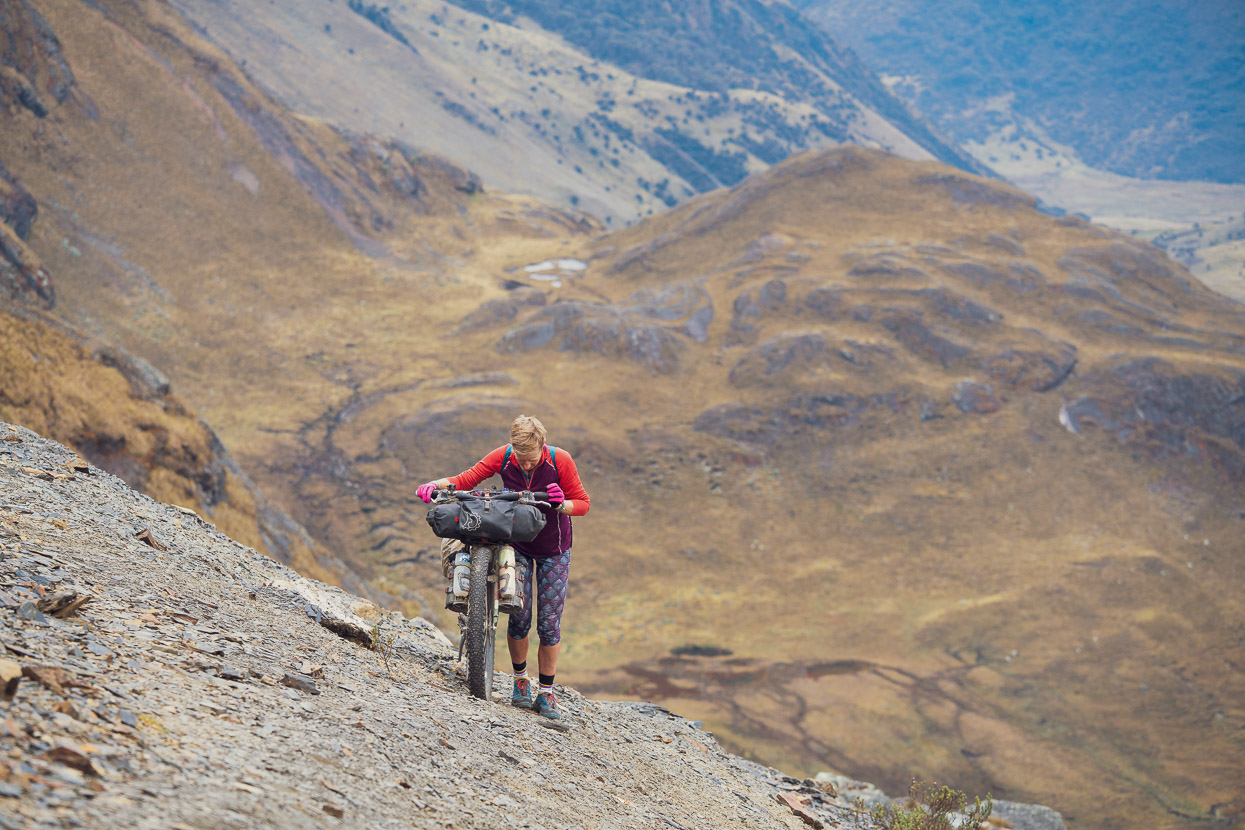
Photo by Mark Watson//Highluxphoto
I stop and suck in deep breaths in the cold thin air, my thoughts wandering: what snacks do I have to eat? How much longer will it take to reach the pass? Will we find somewhere flat to pitch the tent on this steep, rocky terrain? Mark appears, heading back down towards me out of the mist. Wordlessly I step to the back of my bike to push while he takes over lifting the front end up the never-ending steps. This is by far the hardest hike-a-bike we’ve done in the three years we’ve been on the road, and I gratefully accept his help. The idea of giving up, turning back and letting gravity do the work isn’t an option. I know that I can do this, that if I just keep going one step at a time, in a few hours it will be time to stop, rest, recover; that tomorrow will be another – hopefully better – day. Maybe there will even be some rideable trail to reward us for our efforts.
I was never the athletic type when I was young. I was the kid that didn’t learn to ride a bike until I was seven, shown up by my little brother, four years younger than me. The girl that dreaded school sports days, always pleading with my mother to write me sick notes. The teenager that rode a bike to high school only once, got a flat tyre and was late – and refused to ride again. I always had an excuse to avoid anything too physical – it was hard and I hated it. So how did I get from there to where I am now – three years into an epic bikepacking trip from Deadhorse, Alaska to Ushuaia, Patagonia? A journey involving countless hard hike-a-bikes, constantly seeking the road less travelled, the remote trails, and consciously avoiding the easy options. Living this life that I now choose to live, and love.
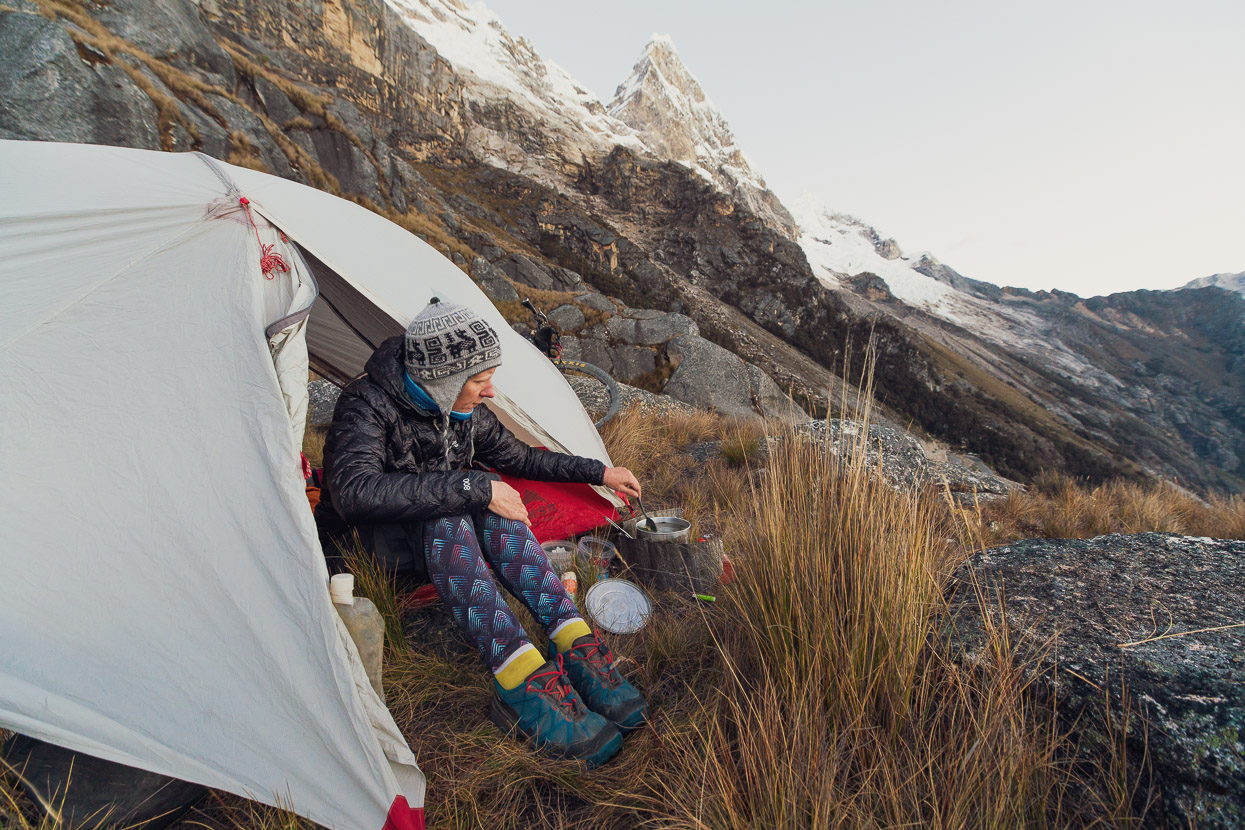
Photo by Mark Watson//Highluxphoto
It has been a long transition from being intimidated by anything that required physical effort to get to this rugged alpine pass in the Andes. The first breakthrough was falling in love with my partner Mark. We had known each other since we were eight years old, in the same class in school, and were both from a group of families that occasionally went on camping and tramping trips together. We weren’t close then but reconnected a year after we finished school, when we were 19. Mark had developed a strong bond with the outdoors and started to invite me on weekend trips hiking, rock climbing, camping and climbing mountains. Love can do funny things – including completely changing your perspective on something – and it wasn’t long before I was looking forward to these regular outdoor activities. My fear of physical effort took years to abate, but Mark was always prepared to wait and was patient and encouraging while I slowly gained fitness and became more confident. Despite my best efforts I was nearly always the slowest in a group and that always bothered me.
A year after we teamed up we decided to buy some second-hand bikes and go cycle touring for a few months. I hadn’t ridden a bike since that flat tyre on my ten speed years before, but the idea of cycling around the country somehow appealed. I left my job, begged my parents to lend me $600 for a second hand bike and we were away! The first week was relatively flat and I managed to pedal slowly over the first few low hills, breathing hard. Then we hit the real hills and I started to think I was going to have a heart attack, though at 20 years old it was probably unlikely. I could barely pedal 100 metres before my heaving chest felt like it had been kicked by a horse. I had no idea how to use the gears, regulate my cadence, control my breathing, or stop the negative thoughts that jumped back into my head: it’s too hard. I can’t do this. What am I doing here? How is it that Mark just disappears ahead and doesn’t have to stop?
Over the weeks that followed I realized that there is more to riding a bike than simply turning the cranks. I’d bought a bike computer that had a cadence function which I started to watch obsessively, constantly changing the gears to keep the numbers high. I learned that it’s okay to ride uphill at only five kilometres an hour and that if I rode at my own pace I could keep plodding along without having to push. My focus changed too: rather than being anxious about how hard it was to reach the top I adjusted my goal to reaching the next tree, the next road sign, the next bend in the road – small manageable steps. A couple of weeks into that several-month tour we went through all our gear and sent home a big box of stuff we thought we could do without. I learned early that every gram counts when you’re pedaling it uphill day after day. And eventually I started reaching the top of the climbs and the end of each day with a smile on my face. Three months soon turned into five, riding where our wheels took us, establishing the pattern we are following now.
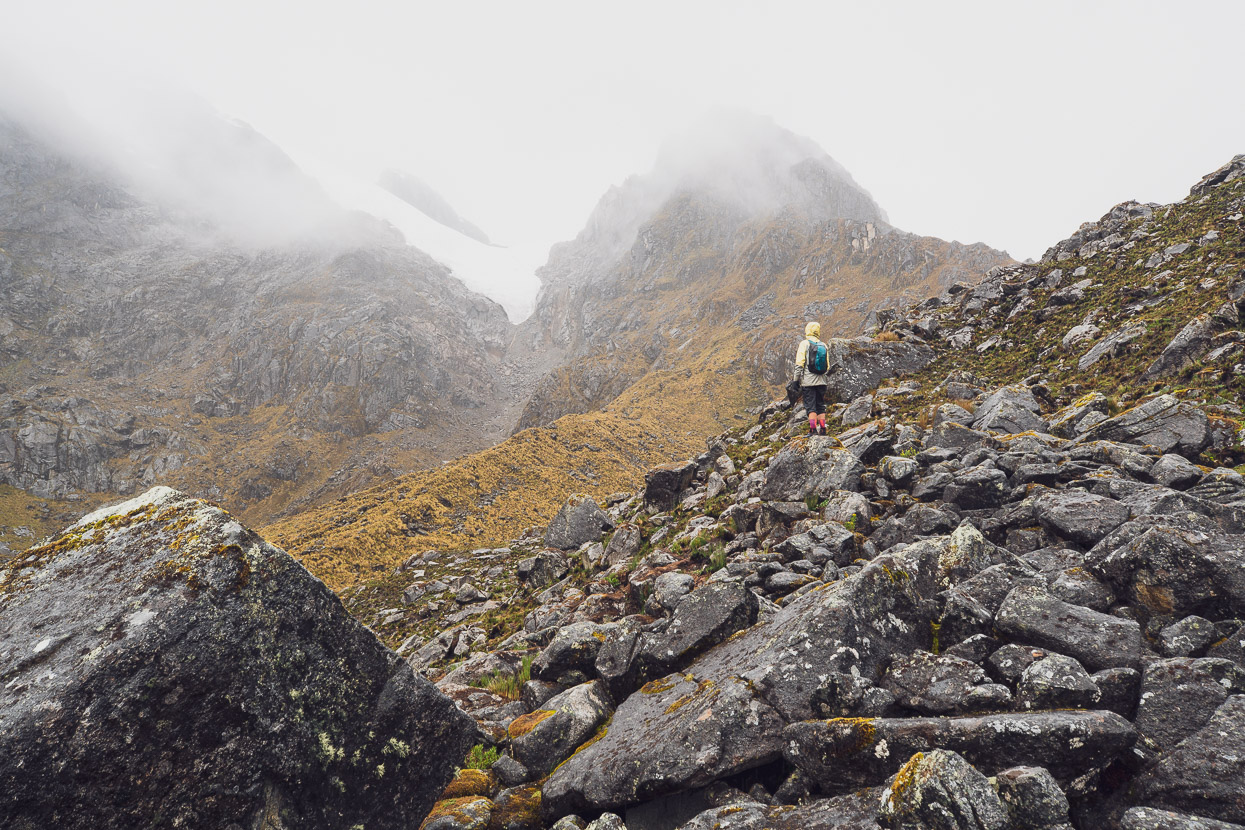
Photo by Mark Watson//Highluxphoto
The rain persists and as we slowly gain elevation the temperature drops. Water runs everywhere and the trail has turned into a stream. Now, high above the tree-line, the tantalizing glimpses we get of the landscape are of a steep alpine world of golden grass and scattered boulders. High above we know there are snow covered peaks reaching as high as 6000 metres, but they remain elusive. At the end of day two we have covered just seven kilometres and 800 vertical metres. Our snail-like pace means we are well below the first pass – our objective for the day. Fatigue has reached the point where I am too tired to even think much about where we are when a couple of tarns appear and magically there is a flat patch of ground just big enough for the tent. With barely a word we stop and begin the routine of setting up camp on autopilot, collecting water, washing off mud and as quickly as possible putting on dry clothes and getting into warm sleeping bags. Job done for the day, we eat and rehydrate. Before going to sleep we are rewarded with a starry canopy above and a view of the craggy mountains reflecting the moonlight.
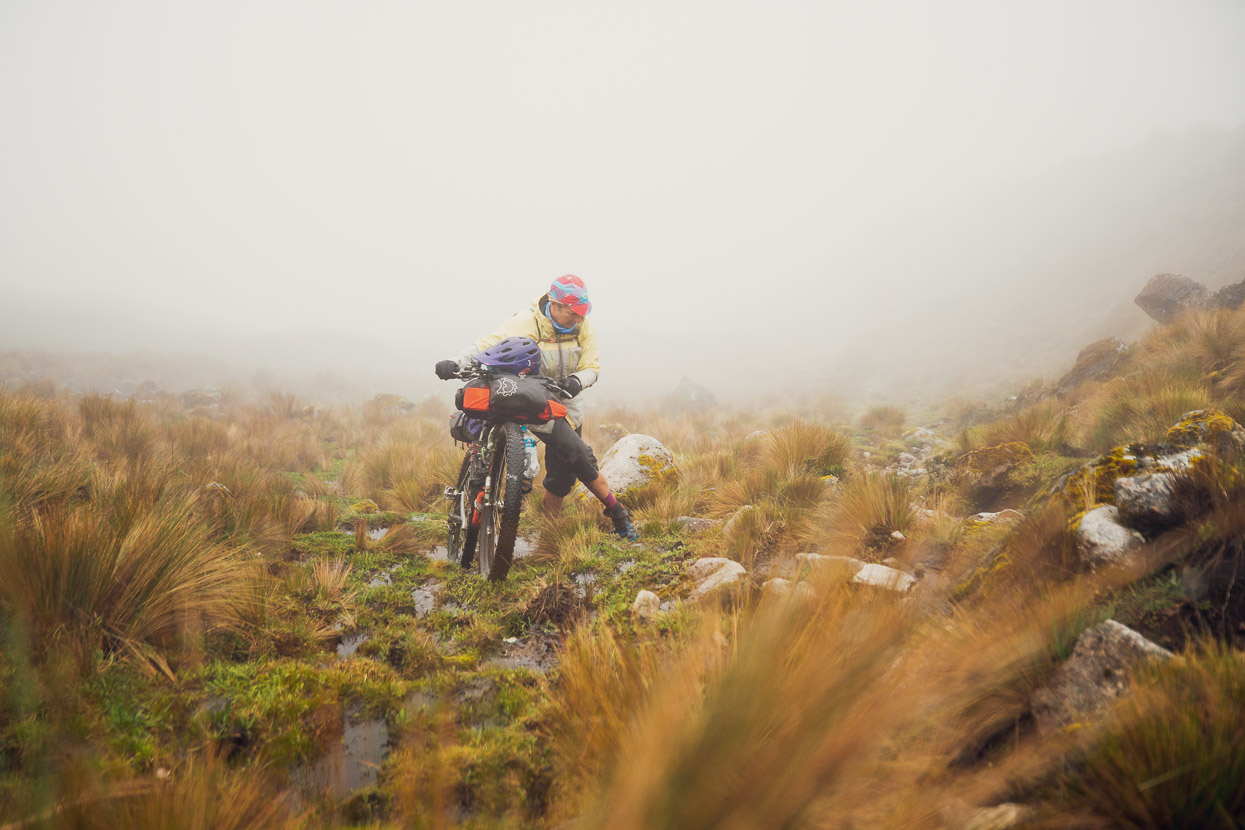
Photo by Mark Watson//Highluxphoto
Mountain biking was a relatively new thing back in the 90s, but as hikers it seemed natural to us to try and ride anything we might have walked prior to getting our bikes. The city we lived in was surrounded by fire trails and hiking tracks and we were soon exploring them all with other enthusiastic friends, and then going further in search of fun riding in our favourite places. One memorable trip was a 12 hour day with plenty of rain, mud and a few tears, that ended with us being benighted a long way from home. At the time I struggled and the experience was beyond my comfort zone, but it’s always the epics that illustrate to you what you are capable of, as well as giving you good stories to tell. For our next long bicycle tour we upgraded our mountain bikes and planned a route that included several multi-day hiking trails. The term bikepacking may not have existed but that’s definitely what we were doing.
While on a road trip climbing and biking in North America in 2009–10 we stumbled across a magazine article by Cass Gilbert about a ride he did to the Tibetan Plateau in south-west China. It sounded so good that after we left the USA we spent nine months in the UK working, researching and saving and bought some cheap mountain bikes and all the other gear we needed for a long tour. We planned to start in the same area and continue all the way back to New Zealand. Apart from visas limiting our time in each country we never planned ahead, allowing ourselves the freedom to explore and to make decisions on the spur of the moment. Unfortunately our poor scale maps, lack of smartphones or GPS and no local knowledge of the countries or language limited the amount of dirt and backroads we could find, though with the help of Google Maps we managed to get off the beaten track occasionally. Of course it’s those adventures into the unknown that stand out in my memory. Once again the desire to explore dictated the pace and sadly our time and money ran out before we made it home. After nine months and 13,000 km we reluctantly ended our trip in Indonesia, but we went home already knowing that we wanted to do more.
One of the biggest boosts to my confidence came shortly after returning home, when the benefits of long distance touring on both my fitness and attitude towards what I considered myself capable of became apparent. I was no longer the one always trailing behind, and long distances no longer fazed me. An 1100 km bikepacking event called the Kiwi Brevet was being held in two months and I was interested, although I’d only ever participated in two events before, the longest being a 114 km road race. I was still a bit hesitant and unsure of myself until a very strong male friend told me that it was the hardest thing he’d ever done and he didn’t think I’d finish it in the one week time limit. That was good enough reason to do it, just to prove I could! I hoped my experience gained in China and South East Asia would get me through to the finish.

Photo by Mark Watson//Highluxphoto
My good friend Jo also signed up and we tentatively agreed to ride together, both quietly thinking we’d hold the other back. It turned out to be a lot of fun in great company: we put in long days and still managed to fit in plenty of relaxed breaks to eat mountains of food and drink a few beers. We made some new friends and had a few laughs too! We enjoyed it so much we signed up for a repeat two years later, and then did the 3000 km inaugural Tour Aotearoa bikepacking event together in 2016. I was never in it to win, and indeed what appealed to me is that there are no winners or losers in these events – just many participants doing it in their own style for their own reasons. Personally, I wanted to challenge myself beyond my previous experience, to remind myself that I’m strong and capable, plus I enjoy the social and supportive atmosphere that comes from being surrounded by other riders pushing themselves too.
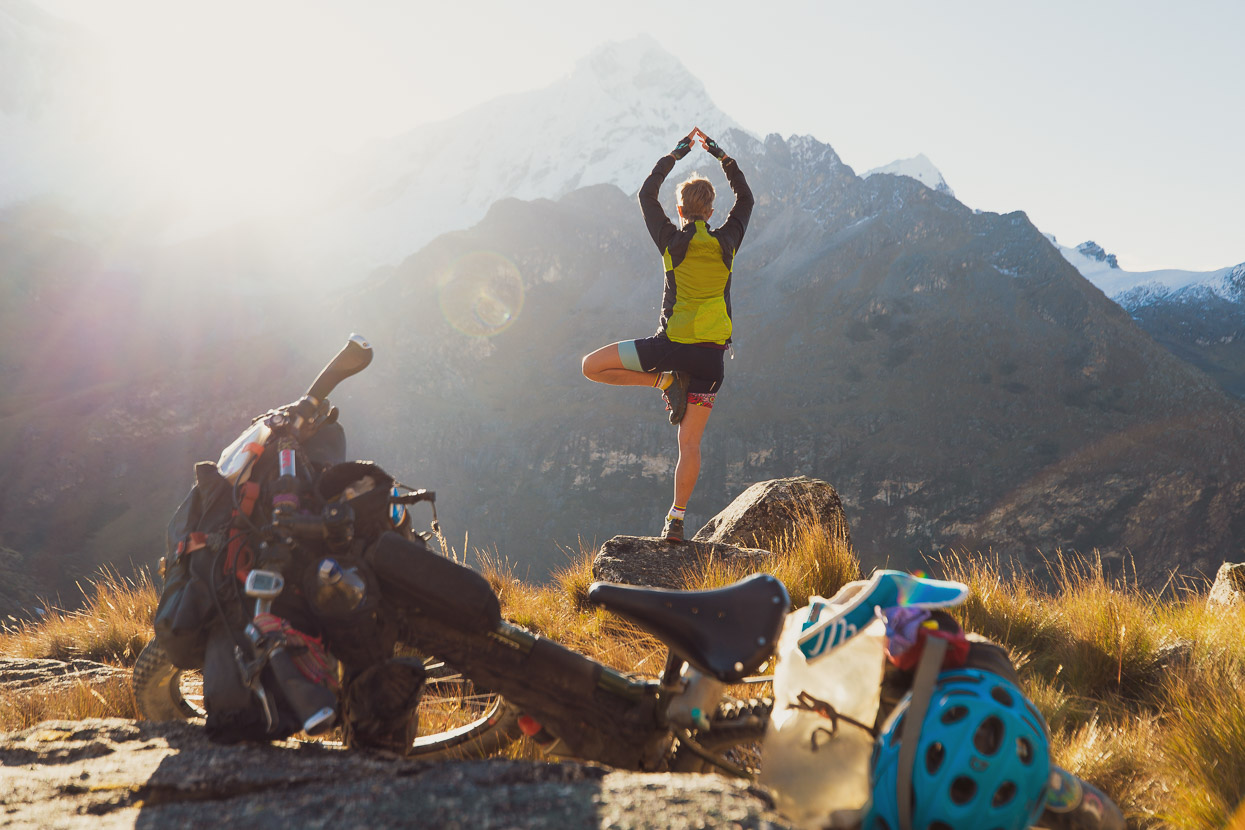
Photo by Mark Watson//Highluxphoto
You win some you lose some and there is plenty of in-between. Day three starts and finishes in the rain. We push over a string of high passes before a long, extremely waterlogged and mostly unrideable descent to a wide flooded valley for the night. The following morning starts out with more soggy on-off riding and a couple more hours of hard slog over the last pass before the rain finally stops and we get to ride some short sections of intact Inca trail, although there is little of the sweet flowy single-track we had been hoping for. I could view this whole experience as negative, but instead choose to focus on the rewards: being alone in a beautiful remote location, surrounded by stunning mountain landscapes, following in the footsteps of the Inca, and most of all the satisfaction of achieving something I would have once considered totally impossible.
As we continue to make our way south along the Andes we occasionally meet other cyclists who tell us they already know us from following our blog or Instagram accounts. It’s awesome to hear, not because it makes you feel a little bit famous but because it’s nice to know that our adventures now inspire others. We were inspired to do what we’re doing now by Cass’ blog (@whileoutriding), that we followed since before starting our ride in China. It’s a good feeling to be part of a community that shares information and encourages others, whether they are doing weekend backyard rides, or are planning something longer. I hope my story helps at least one person to discover what they’re capable of when they pedal beyond their comfort zone.
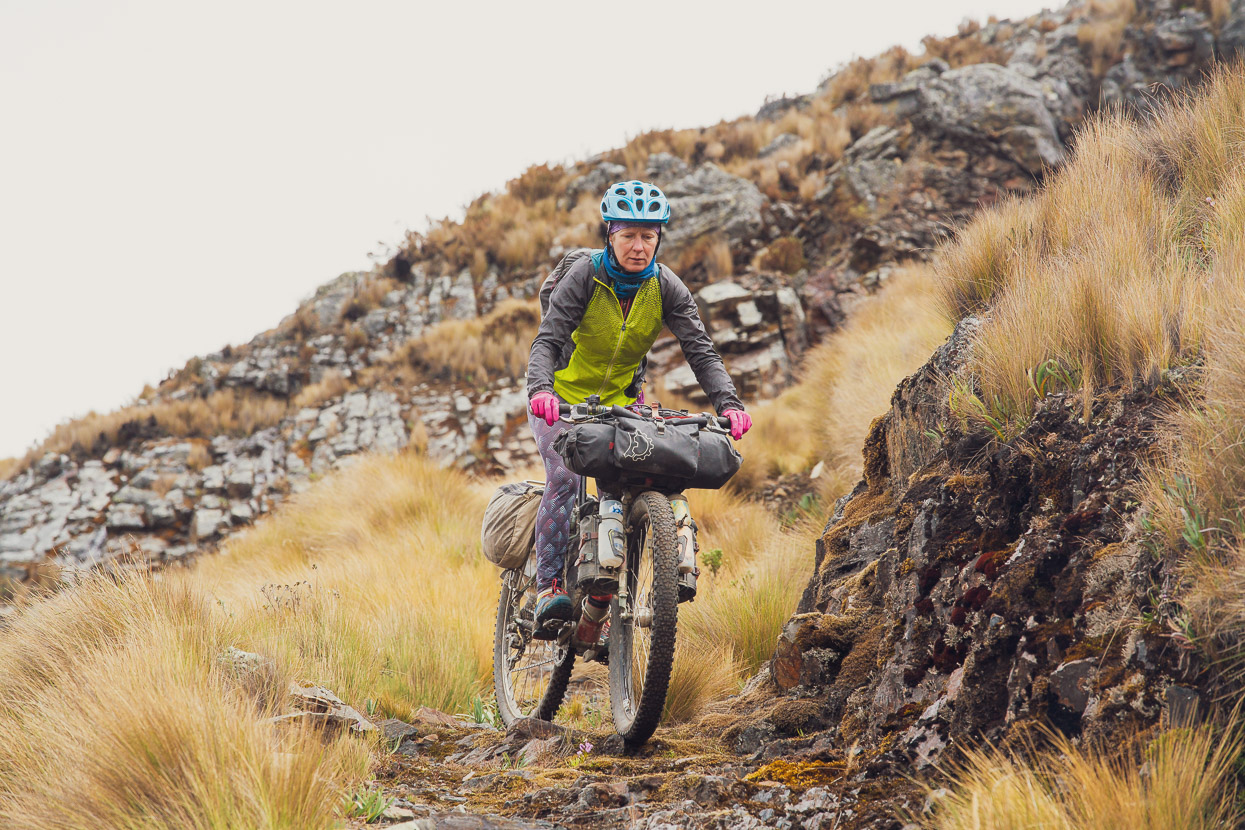
BIKEPACKHER is an ongoing mission to celebrate, recognize, and encourage more women to participate in cycling and bikepacking. We will tell the stories of women in bikepacking, we will share their adventures through writing, photography, video, rides and events, in hopes to encourage more women to participate in the sport we know and love. Help us make change now by sharing this article with a woman you know who has an interest in bikepacking or tag your next adventure #bikepackHER to inspire others and give more visibility to women in cycling.
P.S. We have some BikepackHER stickers available, email us at info@revelatedesigns.com and we’ll throw one your way! They’re super tough outdoor stickers by Sticker Mule that can endure all conditions just like you!
Hana Black has put her previous life as an outdoor clothing designer/developer on hold to follow her dream of freewheeling about the planet. In 2016 she rode the inaugural 3000km Tour Aotearoa – the classic New Zealand bike packing tour. Hana and partner Mark Watson are recipients of the 2018 Bikepacking.com Explorers of the Year award for their contributions while biking the length of the Americas: Alaska to Patagonia. Follow their adventures at Highlux photo – Alaska to Argentina and Instagram @BeingHana and @Highluxphoto

